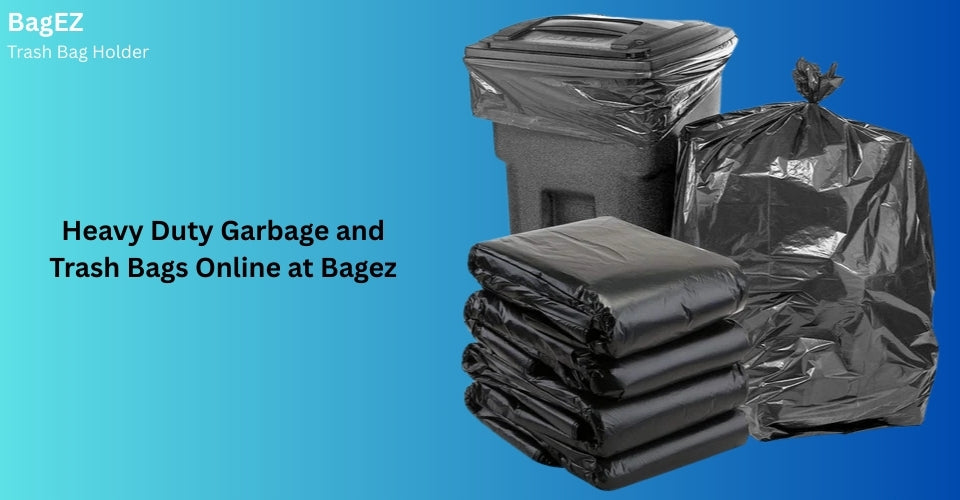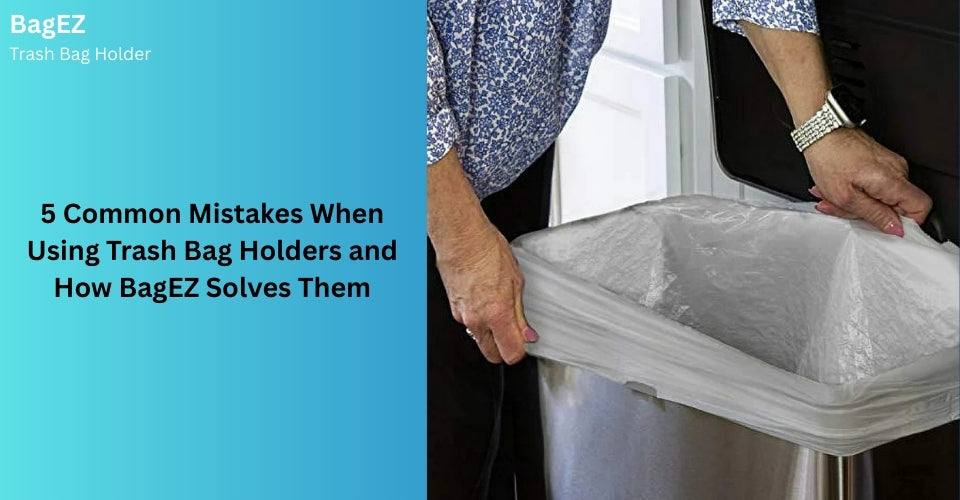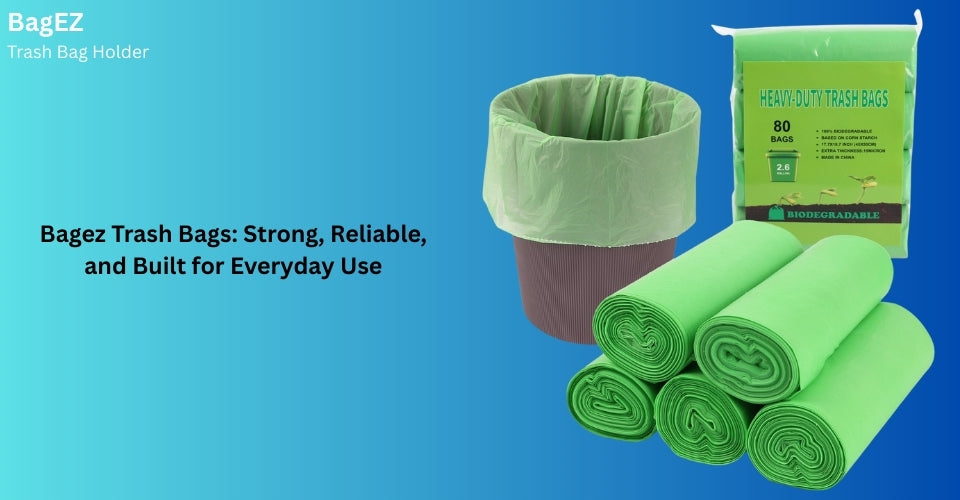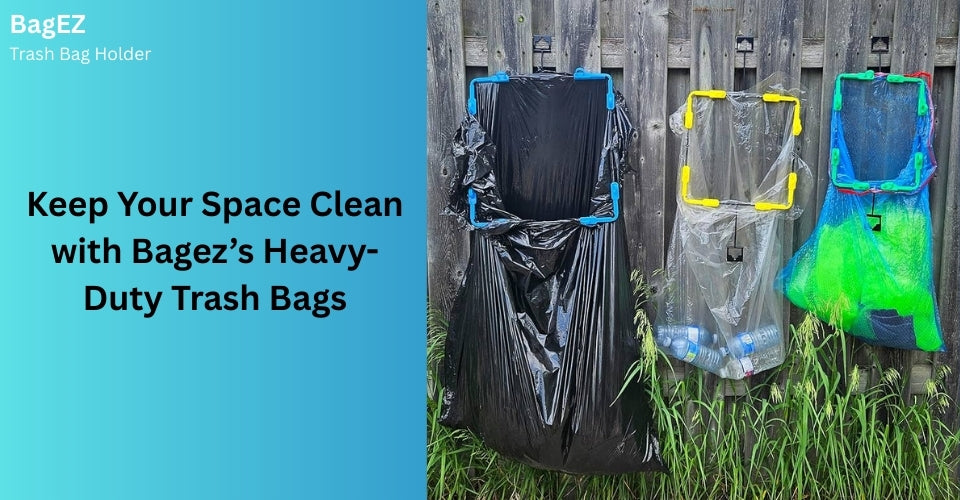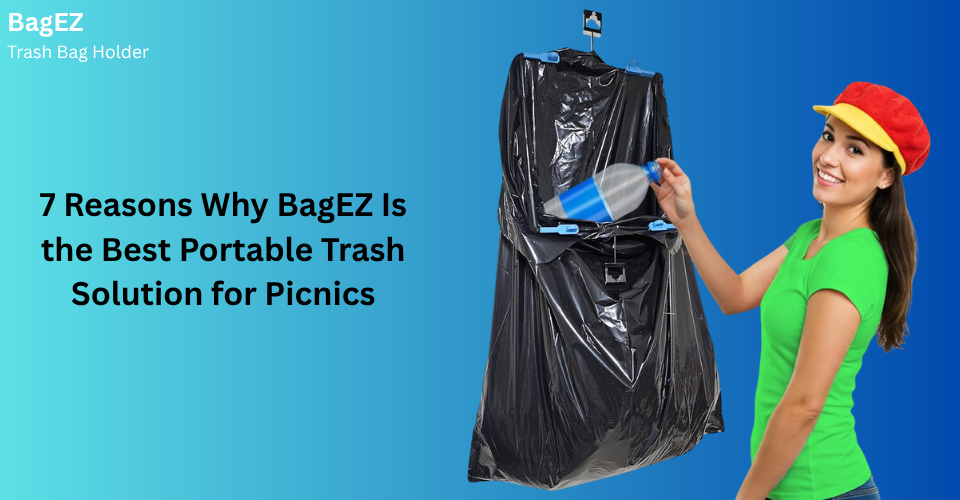When a cleanup requires more than a flimsy liner, the selection of a correct solution saves time and money as well as frustration. For families, construction professionals and facility caretakers, strong garbage and trash bags are the logical option where toughness counts. By design, such bags are immune to punctures, they can accommodate uneven loads, and they keep liquids in or out of place until assigned to be discarded - turning what would have been a sloppy job into a straightforward. The present guide explains what are the differences between premium heavy bags, how to purchase one, and online, and miscellaneous tips to help match a product to the task.
What it means by heavy duty
The phrase is not pure fluff: it is an indication of particular design choices. Heavy-duty films are more thick, stretch-enhancing polymer and are made with reinforced seams. Manufacturers also take care about the location of the material, which has to be wider rather than thick, e.g., on the bottoms and seam locations. The outcome is a bag capable of absorbing blunt-force impacts, and carrying sharp items without risks of slashing and rough handling during transportation.
Built and material selection
The long-lasting heavy bags are customarily designed using high-density or linear low-density polyethylene combinations that offer a conger of rigidity and dexterity. Microembossing on the surface dissipates stress so cuts are not readily propagated; stretch additives make the film deform instead of splitting when snagged. Seam failures, a fairly common failure point in cheaper bags, are prevented through heat-welding, or specially knotted designs. To prevent foul air in closed areas, some products apply odor-blocking layers, or fragrant strips.
Dimensions, capacities and actual needs
Picking the correct size is more important than most buyers are led to believe Small liners (10-20 litres) are best used in a bathroom bin; medium-sized (30-60 litres) are more suited to a kitchen; larger contractor size (90-160 litres) are intended to be used on renovation debris and landscaping waste.
Performance in real-world scenarios
In daily use, the test is straightforward: does the bag survive typical handling and transport without splitting or leaking? High-quality heavy bags show resilience when carrying mixed household refuse, garden clippings and boxed items with corners. For construction waste that includes nails, screws or sharp tile edges, bags designed specifically for contractor use perform better; they often feature thicker bottoms and reinforced sides to resist punctures.
Environmental considerations
Durability and environmental responsibility can coexist. Some heavy bags are manufactured with recycled polymer content or are made to be recyclable where facilities accept them. Compostable options are available for organic waste but generally do not offer the puncture resistance of petroleum-based heavy bags, so they’re best reserved for appropriate municipal programs. When choosing, consider local waste-processing rules and whether your bags are likely to enter recycling streams or landfill.
Buying trash bags online — what to look for

Shopping online streamlines bulk purchases and gives access to detailed specifications that are sometimes absent in store shelves. Look for:
● Clear gauge/thickness and suggested maximum load.
● Explicit seam type and reinforcement details.
● Packaging information showing dimensions and counts per roll.
● Customer reviews that describe real handling (not only ratings).
● Availability of contractor or specialty variants for sharp debris.
Ordering sample packs can reduce surprises when you need to outfit multiple bins or a large site.
Use cases and matching product to task
● Household kitchens and bathrooms: Mid-gauge liners with odor-control perform quietly and effectively.
● Landscaping and yard work: Larger contractor-style sacks tolerate branches and wet clippings better than standard liners.
● Renovation and construction: Always choose the contractor-grade or double-bag; puncture resistance is essential.
Quick comparison table
|
Feature |
Standard kitchen liner |
Heavy-duty contractor bag |
Compostable alternative |
|
Typical capacity |
20–60 L |
90–160 L |
30–80 L |
|
Puncture resistance |
Low–moderate |
High |
Low |
|
Best for |
Daily indoor waste |
Renovation, bulky yard waste |
Food/garden waste in certified programs |
|
Recyclability |
Varies by local rules |
Varies, often lower |
Depends on certification |
|
Odor-control options |
Common |
Limited |
Rare |
|
Cost per bag |
Low |
Moderate–high |
Moderate |
Practical hints to aid the money-saving and minimize waste
Make the bag size equal or slightly smaller than the bin size so as to avoid cases of saturation and unnecessarily incurring a cost.
● Commercial environments: Offices and retail environments benefit with a consistent roll and dispenser ready roll to fit existing bins.
● Buy in large quantities or get coreless rolls to save the floor space.
● Use reusable bins that have liners that fit tightly to minimize spillage and the wear and tear of equipment.
● When packing sharp objects, place cardboard around the objects before bagging to cover the film.
● When you run a facility, test different products and order samples before going into bulk purchases.
When dealing with a cleanup that demands reliability, custom designed heavy liners make the work cleaner and secure. Make sure that clear specifications, genuine user feedback and features developed with your type of waste in mind are priorities when purchasing supplies online. Instead of spending extra time cleaning up, or cleaning up after a mess, or using a product that never performs the same, find the right product that provides consistent performance, reduces mess and saves time.

